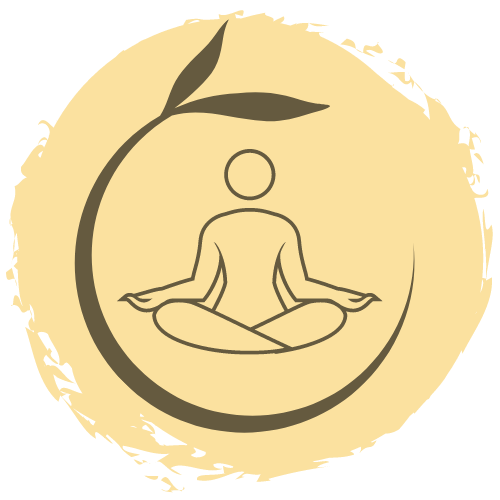Sowing the seed of change with Sankapla
So here we are at that time of year when some of us are thinking about making a New Years Resolution. Or maybe thinking, what is the point, because a week or two later, you have already given up on those ideals. Well, this may be a time to deepen your resolve for something that has a true meaning for you, for your life as a whole.
According to Yogic philosophy, the most effective means of training the mind is found in the Sankalpa. A Sankalpa is traditionally used at the beginning and end of the Yoga Nidra practice.
Sankalpa (Sanskrit: सङ्कल्प) means an intention formed by the heart and mind, a solemn vow, determination, or will; its a yogic tool to help us focus and bring the power of our deeper core desires to bear in our lives; a heartfelt intention reflecting our highest ideals; In practical terms a Sankalpa means a one-pointed resolve to focus both psychologically and philosophically on a specific goal; our intention, our resolve or resolution.
When making our Sankalpa, it takes the form of a short mental statement which is impressed on the subconscious mind when in a receptive state, like sowing a seed for something positive to grow into a powerful directive for your life. Once the seed is planted deep in the subconscious, it gathers the vast forces of the mind to bring about its fruition. This powerful seed will eventually manifest itself again and again at a conscious level and bring about changes in you and your life.
Your Sankalpa can be intellectual, but this does not bring meaningful results, nor does the application to fulfil your personal desires such as eradicating bad habits. The higher purpose of Sankalpa is to influence and transform the whole pattern of life, not only physically, but mentally, emotionally and spiritually. So when that transformation happens, the bad habits have already gone. According to yogic philosophy, when Sankalpa becomes the directing force, everything you do in life becomes successful.
How to set your Sankalpa
A sankalpa can take two forms. The first is what Richard Miller (teacher in the Advaita Vedanta tradition) calls “the heartfelt desire,” a statement that reflects your true nature. This type of sankalpa is far more all-encompassing than a New Year’s resolution, and requires no change or action. It is literally and simply a statement of who you are, such as “I am already whole, and already healed,” or “I am peace itself.” According to Miller, it doesn’t come from the intellectual mind. He says, “The resolve comes from deep within us, directly out of the mystery of who we ultimately are. It then informs our mind of a particular direction that we need to take, or are taking in our life.”
A sankalpa can also take a second form—that of a specific intention or goal. Brenna Geehan, (ParaYoga instructor), explains, “When you discover your purpose, not everything happens all at once. To live your soul’s mission, you need to reach milestones.” Setting specific intentions can help you align your moment-to-moment choices with your heartfelt desire. Geehan suggests looking forward into the next year and asking yourself what specific things need to happen to move you forward on your path. Your specific sankalpa will describe what you need to do, and where you need to direct your energy, to make progress on your larger life goals.
So making some time with yourself to contemplate these questions, will refine what your Sankalpa is. We must keep it personal to us, but to get you started, here are some examples of a Sankalpa, but remember, the one most meaningful for you, is the one you create for yourself. We keep the same Sankalpa until it becomes true for us. It should be a short, positive statement in simple language, mentally stated 3 times with awareness, feeling & emphasis. So as with everything in yoga, practice & patience is essential.
Some examples of Sankalpa:
For Compassion: I am filled with divine compassion; In every encounter, I treat myself and others with kindness.
For Presence: I am here. I am fully present.
For Grounding: I am grounded, I am rooted to the earth, I am safe.
For Peace: I am at peace, I am peaceful. I inhale peace, I exhale peace.
For Trusting in Life: I trust life and open to the abundant universe. I am thriving with Joy in my heart. I trust Life and go with the flow.
For Spirituality: I am raising my vibration and connecting to my higher self; I am aligned with source energy.
Remember, a sankalpa isnt a petition or a prayer, it is a statement of deeply held fact, and a vow that is true in the present moment.
So here we at the beginning of a new year when we typically think about making new years resolutions, if you are not quite ready to use your Sankalpa, perhaps this approach from Rick Hanson (one of my favourite teachers), may interest you.
Rick says: “So this year, I'd like to offer something different: 12 Resolutions — one for each month — that together will help you feel happier, stronger, and calmer. And, I've created a guided path for you to follow, with new tools each week so that you can”
Be on your own side
Steady your mind
Learn to take in the good
Become more determined
Find the beauty in life
Let go of shame and build confidence
Cool your anger and become calmer
Honor your desires and increase motivation
Create better relationships
Become assertive and rise to challenges
Deal with fears and realize your dreams
Resource yourself and become compassionate
Take a look!
https://www.rickhanson.net/online-courses/the-foundations-of-well-being/

